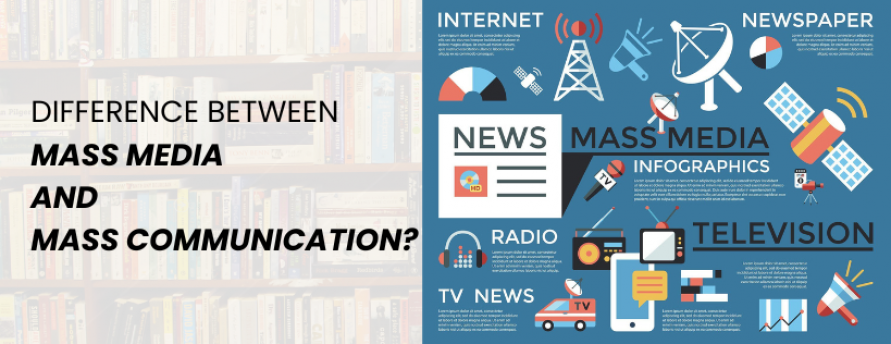

14
Nov 2024
In today’s digitally connected world, “mass media” and “mass communication” are often used interchangeably. However, each term has a unique role in delivering information, influencing public opinion, and shaping cultures. This blog will clarify the key differences between mass media and mass communication, helping you understand their individual contributions and significance.
What is Mass Media?
Mass media refers to the various platforms and channels used to deliver information to a large audience. It encompasses traditional outlets like television, radio, newspapers, and magazines, along with digital platforms such as social media, websites, and streaming services. These channels act as intermediaries to share content on news, entertainment, education, and advertising with a broad audience.
Types of Mass Media include:
Each type of mass media has specific purposes, yet all aim to reach and influence large audiences.
What is Mass Communication?
Mass communication, on the other hand, is the process of creating, sending, receiving, and analyzing messages meant for a large audience. Unlike mass media, which emphasizes channels, mass communication focuses on the exchange of information itself. This can include news reporting, advertising, educational content, and public relations efforts.
Key Elements of Mass Communication:
- Source: The originator of the message (e.g., journalist, advertiser, content creator).
- Message: The information or content being shared.
- Medium: The channel used to communicate the message (e.g., TV, social media).
- Receiver: The audience or group receiving the message.
- Feedback: The response or interaction from the audience, if applicable.
Mass communication encompasses both one-way communication (like a news broadcast) and two-way interaction (such as social media conversations).
|
Feature |
Mass Media |
Mass Communication |
|
Definition |
Channels used to distribute content widely |
Process of sharing messages with a large audience |
|
Focus |
Platforms (TV, radio, internet) |
Content and messaging strategies |
|
Primary Purpose |
Deliver content to inform or entertain |
Engage and communicate with the audience |
|
Types |
Print, broadcast, digital, OOH |
Journalism, advertising, PR, social media |
|
Interaction |
Generally one-way |
Can be one-way or two-way |
|
Audience Feedback |
Limited, often delayed |
Potential for direct, real-time interaction |
Why Understanding the Difference Matters
Knowing the distinction between mass media and mass communication is essential for professionals in fields like marketing, advertising, public relations, and journalism. Selecting the right media channels and structuring messages effectively can greatly improve audience engagement and impact.
For instance, brands often leverage digital media channels to reach consumers but employ strategic communication techniques to foster brand loyalty. Similarly, journalists craft stories that resonate with audiences, using mass media to amplify their reach.
For students aspiring to build careers in these fields, institutions like MET Institute of Mass Media offer specialized programs. MET’s Post Graduate Programme in Mass Communication & Media Management (PGP MCMM) equips students with the skills and industry knowledge needed to excel in both mass media and mass communication roles, bridging the gap between creativity and strategy in a fast-evolving digital landscape.
Conclusion
In summary, mass media is about the platforms and channels while mass communication focuses on the process and content of reaching audiences. Both play pivotal roles in shaping opinions, disseminating news, and fostering cultural connections.
Whether you’re a student, marketer, or communication professional, understanding these differences enhances your strategic approach to media and communication, making your work more impactful in an information-rich society.
 Leave a reply
Leave a reply
 Reviews (0)
Reviews (0)
 Reviews (0)
Reviews (0)